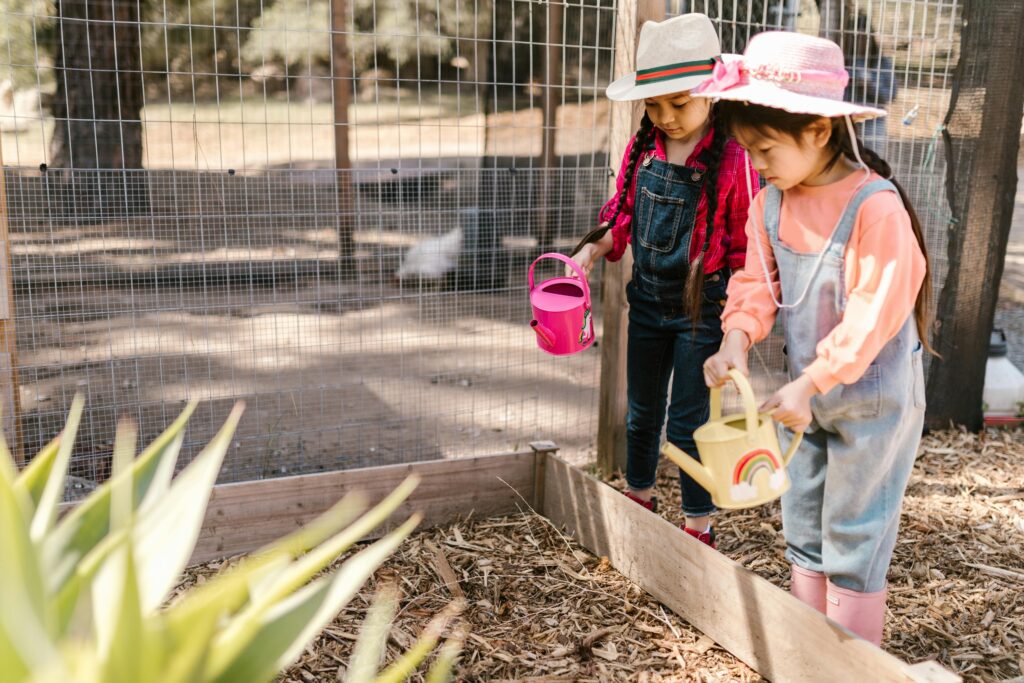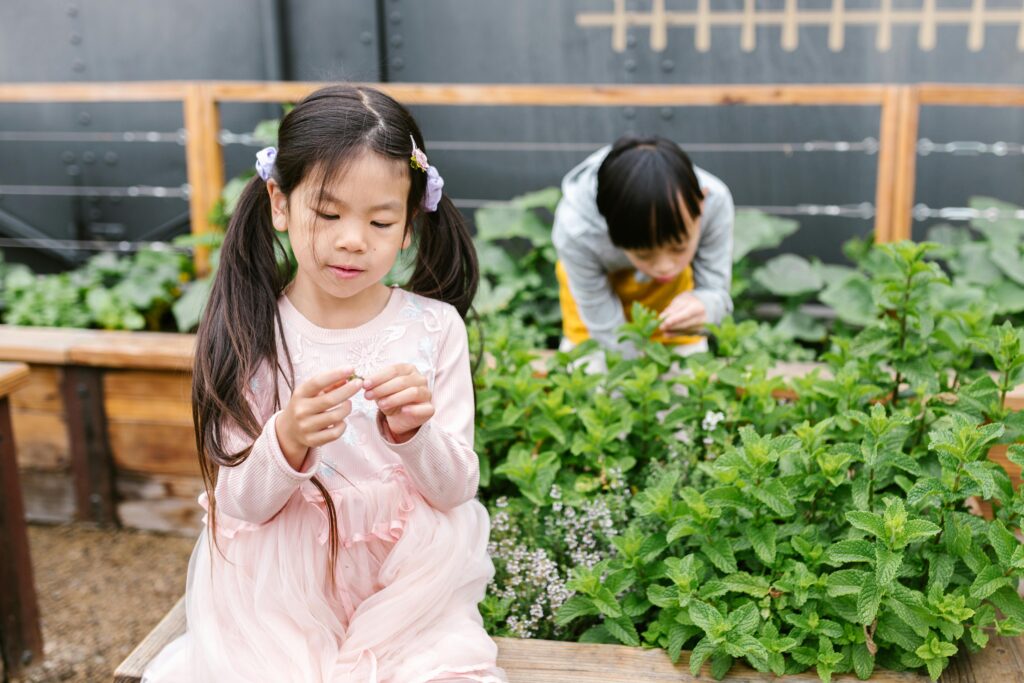A parent’s biggest hope is to see their kids grow up strong, healthy, and full of energy. Growing some of their food right at home is one way to accomplish that. Gardening with children not only encourages them to try fresh fruits and veggies, but it also teaches them where food comes from. Here is how to grow nutritious foods at home for your kids in a garden packed with vitamins, flavor, and excitement.
Why Grow Food with Kids?
Beyond the obvious benefit of fresh, healthy produce, gardening with children offers a lot of benefits:

- Building Healthy Habits: When kids plant a seed, water it, watch it grow, and then harvest the fruit (or veggie!) of their labor, they’re far more likely to try and enjoy it. Early exposure to fresh produce helps establish a lifelong appreciation for healthy eating.
- Learning: In a world of supermarket aisles, many children don’t truly grasp how food gets to their table. Gardening teaches them about seasons, plant life cycles, and the effort involved in producing food. Tending a garden teaches kids about patience, consistent care, and the rewards of responsibility.
- Outdoor Time & Movement: It’s a wonderful excuse to get away from screens, enjoy fresh air, and engage in light physical activity.
Food to grow: Begin with crops that are simple to grow, quick to harvest, and familiar to your kids. Plant tomatoes, lettuce, carrots, sweet corn, pepper, vegetables, strawberries, or beans. These grow well in containers, raised beds, or even window boxes.
Setting Up Your Kid-Friendly Garden Space
You don’t need acres of land to set up a garden space. A successful kids’ garden is about accessibility and safety.

- Location: Choose a spot that gets plenty of sunlight (most vegetables need at least 6 hours). This could be a sunny patch in the yard, a balcony, a patio, or even a bright windowsill indoors for herbs. Ensure kids can comfortably reach all areas of the garden. Raised beds are excellent for this, as are large containers.
- Keep it Manageable: Start small! A single raised bed, a few large pots, or even a window box is perfect for a first garden. Overdoing it is overwhelming and discouraging.
- Good Soil: Healthy plants start with healthy soil. Use a good quality potting mix for containers or amend garden beds with compost to provide rich nutrients.
- Kid-Sized Tools: Provide child-sized gardening gloves, a small trowel, and a watering can. Having their tools makes them feel more involved and responsible.
- Safety First: Ensure any area where sharp tools or hazardous materials are stored is out of reach. Use organic pest control methods if needed, avoiding harsh chemicals. Check that the plants you choose are non-toxic if accidentally ingested by children.
How to grow nutritious foods at home for your kids
The real magic happens when you make gardening a shared activity, not just a chore.

- Planting the Seeds: Let them choose what to plant (from your pre-selected kid-friendly list). Help them gently plant seeds into the soil or place seedlings. This is often the most exciting part!
- Daily Check-ins: Make it a routine to visit the garden together each day. “Let’s go check on our tomatoes!” or “Did our radishes sprout yet?” These small moments build anticipation and connection. Assign watering as a fun, regular task. A small watering can makes them feel important.
- Pest Patrol: Help them look for tiny bugs. Teach them to gently pick off caterpillars or identify ladybugs. This fosters observation skills.
- Harvesting: This is the ultimate payoff. Let them pick the ripe vegetables and fruits themselves. Celebrate each harvest, no matter how small, and instantly turn their bounty into a delicious snack or part of a meal. “You grew this!” is a powerful phrase.
- Cooking Together: Once harvested, involve them in preparing the food. Wash the lettuce, slice the cucumbers, or stir the basil into the sauce. This closes the loop from garden to plate.
Conclusion
Remember, gardening is a journey, not always a perfect outcome. Some plants might not thrive, and that’s okay. Use it as a learning opportunity. The most important thing is the experience, the time spent together, and the lessons learned about nature, food, and patience. Growing nutritious food with your kids is more than just cultivation; it’s about nurturing curiosity, fostering healthy habits, and planting seeds for a lifetime of appreciation for fresh, wholesome food. Get ready for a rewarding adventure!








